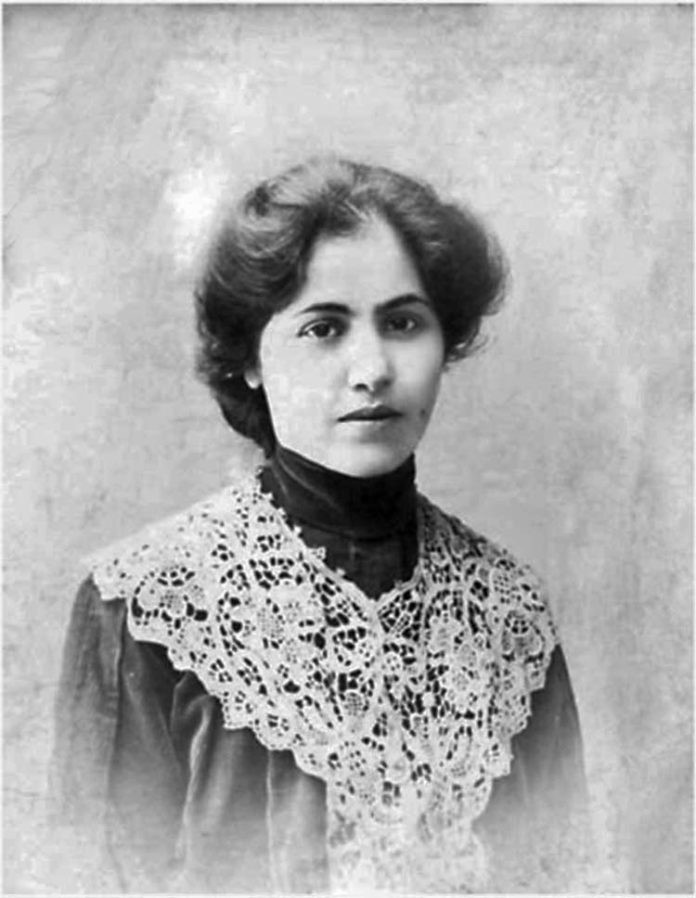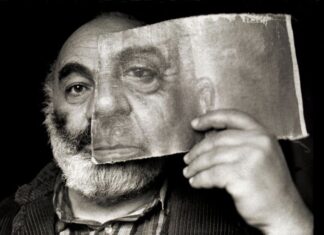The collective of dynamic young artists, based in Brooklyn, New York, who in 2018 initiated The Armenian Creatives, to create a community of support, are alive and well. Ever since the group’s inception, the members have been getting together regularly, “over dinners, across computer screens, and through printed matter . . . to share stories about what it means to find home in diaspora.” Exchanging words, back and forth, created a “community of language” that built the foundation for a projected series of publications, of which the newly released Those words, that offer to us (self-published, with support from the Calouste Gulbenkian Foundation, January 2023), is the first. The elegant 135-page mini-book is evidence that these emerging artists’ creativity, and their commitment to their Armenian history and identity is stronger than ever.
Those words, that offer to us is the first of three publications on translation, an activity which the artists hope will lead to a new way of understanding the language, and hence to improved communication among the various communities of Armenians scattered around the world. Their initiative is, in fact, an attempt to revive Western Armenian, the language spoken by most Diasporan Armenians, which, if not reinforced, is in danger of disappearing. In 2010, Western Armenian joined UNESCO’s list of endangered languages, with the status of “definitely endangered,” which means that it is a language that “children no longer learn as their mother tongue at home.”
Edmond Y. Azadian, the late senior editorial columnist for the Mirror Spectator, expressed his sense of the urgency of the situation in a January 1, 2014 editorial. “There is no remaining center to sustain Western Armenian,” wrote Azadian. It is this same concern that the Armenian Creatives echo, when they “seek to contribute to the sustainability of Western Armenian.”
Assembled in the book are five different projects, all experimental, each approaching the task of translating a literary text, produced any time from the 19th century onward, with the translator’s own understanding of the process of translation, as long as it involves Western Armenian. Alexia Hatun, for example, “translate[s] towards me.” In other words, she explores her experience of reading Zabel Yessayan’s Hokis Aksoryal (My Soul in Exile), “translating inspiration into new creativity, Western Armenian as my only tool.” A novice to Western Armenian, which she started studying as an adult, Hatun does an extraordinary job of “translating the contents of my soul into language, using my adopted mother tongue, without the mediation of a dominant language.” Her poem gives free rein to expressing her sentiments, while remaining true to Yessayan’s spirit to rebel and to fight. The persona starts in a state of inner turmoil and sadness but refuses to succumb to hopelessness, vowing to fight to free her soul. The poem ends with images of a new dawn, and with dreams of “creating new heavenly domes with our letters.”
Using a different approach, Mher Tarakjian translates excerpts from his Aleppo High School Armenian literature handouts, to highlight a history of displacement, and of separation into East and West. “Today, our histories are continually translated and reshaped in a globally dispersed diaspora,” he writes. Mher explains that the process of translating the segments on Shahan Shahnour, Mateos Zarifian and Krikor Zohrab from the handouts, makes him “love the language and dream in Armenian again . . . and maybe dream of a new Armenia,” just as the teacher had hoped her students would.
Alina Gregorian juxtaposes sentences from children’s books, in Eastern and Western Armenian, attempting to show “how different the dialects can be.” Hrayr Varaz, on the other hand, translates lines from Nancy Agbabian’s poem, “Fear of Sex,” into Western Armenian, “replicating the flow of spoken language over formal grammar rules.”










